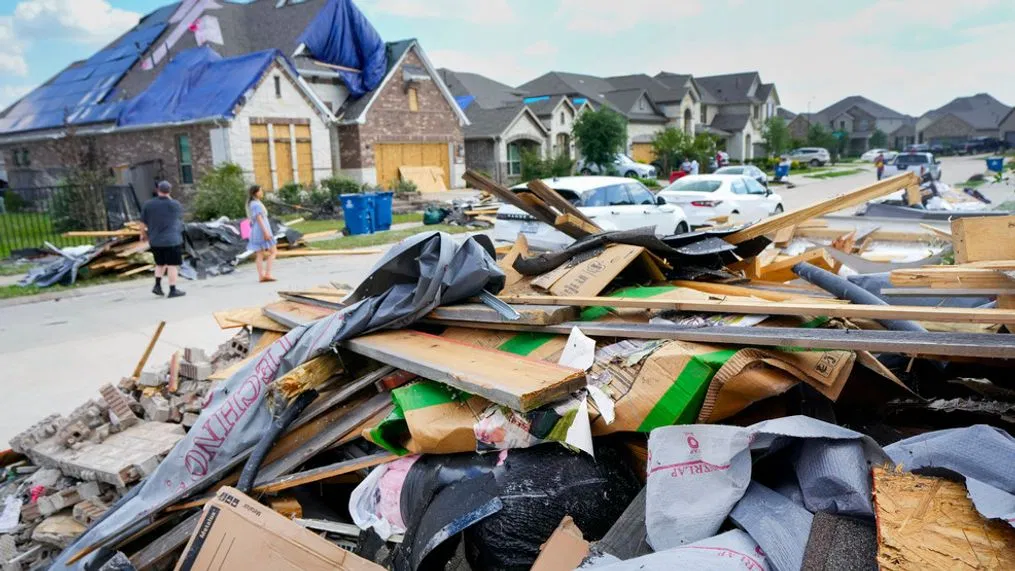Overview of the Severe Storms
The Houston area recently experienced a series of severe storms, resulting in significant damage and a growing death toll. The storms, which began on the evening of April 15th and continued through the early hours of April 17th, were characterized by a combination of extreme weather phenomena. Meteorologists reported that the confluence of a cold front moving south from the central United States and a warm, moist air mass from the Gulf of Mexico created the perfect conditions for these intense storms.
The affected regions included Harris, Fort Bend, and Montgomery counties, with some of the most severe impacts observed in the city of Houston itself. The storms brought with them heavy rainfall, high winds reaching up to 70 miles per hour, and large hailstones, some measuring up to two inches in diameter. Additionally, several tornadoes were reported, with the National Weather Service confirming at least three touchdowns in the greater Houston area.
The intensity and duration of the storms caused widespread destruction. Initial reports indicated significant structural damage to homes and businesses, power outages affecting thousands of residents, and substantial flooding in low-lying areas. Emergency services were quickly overwhelmed as they responded to numerous calls for assistance, ranging from water rescues to debris removal.
As the storms progressed, reports of casualties began to emerge. By the time the weather system moved out of the area, eight fatalities had been confirmed. The victims included individuals trapped in their homes by floodwaters, drivers caught in flash floods, and residents struck by falling debris. Numerous injuries were also reported, with local hospitals treating cases related to the storm’s impact.
This overview highlights the severity of the storms that struck the Houston area, providing a detailed account of the meteorological conditions, affected regions, and the immediate aftermath in terms of damage and casualties. The community now faces the challenging task of recovery and rebuilding in the wake of this devastating weather event.
Impact and Response
The severe storms that recently ravaged the Houston area have left a profound impact on the community, with the death toll tragically rising to 8. The circumstances surrounding these fatalities are harrowing; many of the victims succumbed to injuries inflicted by falling debris, while others were caught in flash floods that swept through residential neighborhoods. The broader human impact is equally distressing, with numerous injuries reported and hundreds of families displaced from their homes.
Property damage across the region is extensive, with preliminary estimates suggesting millions of dollars in losses. Homes have been destroyed, businesses have suffered significant setbacks, and critical infrastructure has been severely compromised. In the aftermath of the storms, local authorities, emergency services, and community organizations have mobilized swiftly to address the immediate needs of those affected.
Rescue operations have been a focal point of the response, involving coordinated efforts between firefighters, police, and volunteers to locate and assist trapped individuals. Relief efforts are underway, with shelters established to provide temporary housing for displaced residents and distribution centers set up to supply food, water, and essential items. Medical teams are also on the ground, offering urgent care to the injured and ensuring that health services are accessible to all who need them.
Despite these efforts, challenges in recovery persist. Many areas remain inaccessible due to floodwaters and debris, complicating rescue and relief operations. Community organizations are working tirelessly to overcome these obstacles, but the scale of the disaster requires sustained support and coordination. Long-term plans for rebuilding are being developed, focusing on restoring infrastructure, providing financial assistance to affected families, and implementing measures to mitigate the impact of future storms.
Support measures for affected individuals include counseling services to help cope with trauma, financial aid programs to assist with rebuilding, and community outreach initiatives to foster resilience. As the community comes together to navigate this crisis, the collective response underscores the importance of preparedness and the need for comprehensive strategies to safeguard against future disasters.



































